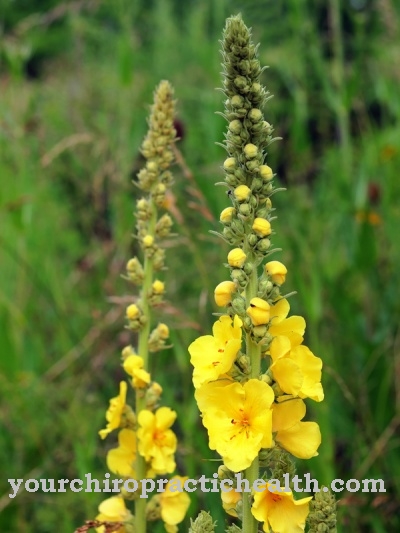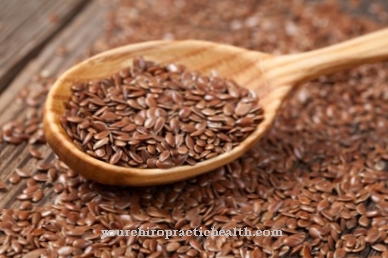The Spring fingerwort is a plant that grows in different varieties in the wild and also occurs as an ornamental plant in gardens. Nowadays it hardly plays a role as a medicinal herb. In ancient times and in the Middle Ages, it was used to treat various diseases.
Occurrence and cultivation of spring fingerwort

It forms runners of up to one meter in length, the stems of which form small roots at the nodes. The plant spreads like a carpet in open locations. Its basal sheets are inversely ovate or lanceolate, one to three centimeters long and equipped with up to five teeth on both sides. The shoots sprout laterally from the basal leaves of the previous year. The spring fingerwort forms individual yellow 5-ray flowers on the branches branched out at the top.
Other varieties develop racemose inflorescences with three to ten yellow flowers about 1.8 centimeters in diameter. The leaves and stems of the old medicinal plant are hairy. In summer and autumn, the flowers form into seeds. The young, fresh leaves and the roots of the spring fingerwort can be prepared as vegetables and have a slightly sweet taste. If you want to use them as a herbal medicine, pick the leaves in spring and summer during flowering (March to May) and dry them.
The roots are dug up, cleaned, cut into small pieces and dried in autumn. Some cinquefoil varieties even bloom a second time in autumn. Spring fingerwort originally comes from Asia and Europe and is found today from northern Spain in the west to Belarus and Bulgaria in the east, from central Sweden in the north to southern Italy. It is also widespread in Germany, with the exception of the northern federal states.
The medicinal plant loves sunny to partially shaded locations and prefers nutrient-rich, dry, permeable sand and gravel soils. Walkers can also find them on roadsides, embankments and on dry meadows and pastures. It also grows on mountain slopes up to 1,700 meters. The undemanding plant is now also grown in stone and natural gardens.
Effect & application
Spring cinquefoil is not used as often as a medicinal herb because its other cinquefoil relatives have potent medicinal properties. It contains flavonoids, fatty acids, triterpenes, tannins, glycosides, tormentol, starch, resin, essential oils and other ingredients. The plant has anti-inflammatory, antibacterial, antiviral, antioxidant, immune-boosting, astringent, analgesic, antispasmodic, constipating, wound-healing, dehydrating and blood sugar-lowering properties.
Leaves and roots are used medicinally. The spring fingerwort is used internally as a tea, decoction and tincture and externally as a pad and poultice. Diarrhea is best cured with tea. To do this, the patient scalds a teaspoon of roots with 250 milliliters of boiling water and lets the tea steep for five minutes. After straining, he drinks the lukewarm tea unsweetened. The tea also helps against inflammation of the mouth and throat and bleeding gums.
The user then uses it for mouth rinsing and gargling. The tea is also used to reduce fever. To do this, 30 grams of roots are boiled in one liter of water for ten minutes. The patient then drinks a cup of the strained tea three times a day. For external use, mash pads made from fresh, crushed leaves are suitable. They are used to treat smaller and poorly healing wounds.
The active ingredients disinfect the wound, pull it together and ensure the formation of new skin cells on the injured area. However, topical application of spring fingerwort can cause scarring. Washings with spring fingerwort roots also help wounds to heal quickly. To do this, the user boils 35 grams of roots in one liter of water for 15 minutes. Then he filters the decoction and washes the wound thoroughly with the cooled liquid.
To treat nail inflammation, the powdered and boiled root is mixed with raw egg and placed in a gauze. The cooled porridge is placed on the inflamed area. The envelope should be renewed three times a day. A decoction made from spring fingerwort leaves helps against ulcers in the oropharynx: The patient puts 20 grams of dried leaves in one liter of boiling water and lets the decoction steep for 15 minutes. Then he dabs the aphthous ulcers several times a day with a cotton swab dipped in the decoction.
Importance for health, treatment & prevention
Spring fingerwort has a wide range of uses, even if it is hardly used in naturopathy today. Used internally as a tea and tincture, it relieves stomach and toothache. When used externally as a pad and envelope, it heals eye, cuticle and skin inflammation, skin impurities such as dandruff and acne as well as ulcers.
As a mouthwash and gargle solution, the decoction helps with inflammation of the oropharynx and gingivitis. Its spasmolytic effect shows itself in muscle cramps and cramps in the gastrointestinal tract. The medicinal plant has antiseptic properties for open wounds and promotes wound healing. It also has a fever-lowering effect on colds and inflammation and soothes diarrhea.
Thanks to its astringent effect, bleeding is quickly stopped. Patients with urinary stones can take advantage of their draining effect. In addition, the ingredients in spring fingerwort reduce high blood sugar levels.

























.jpg)


